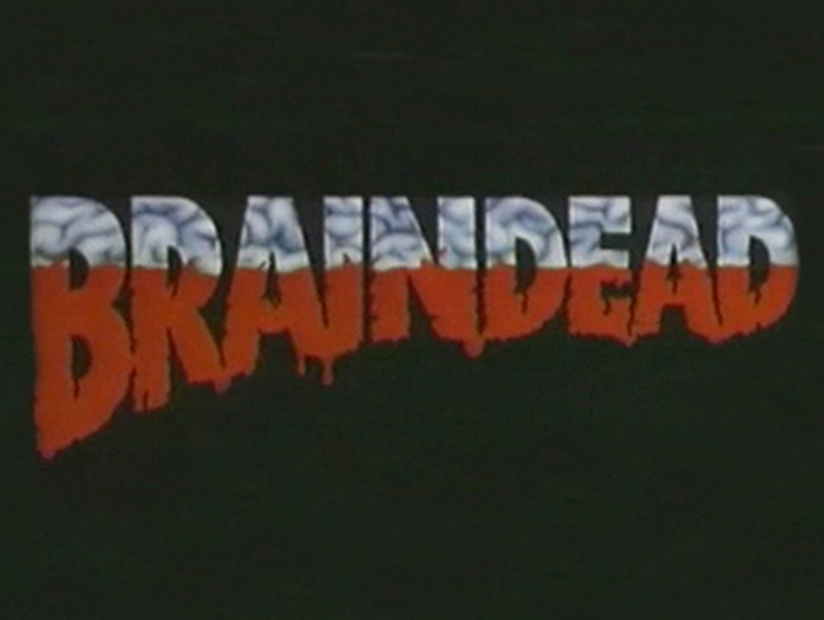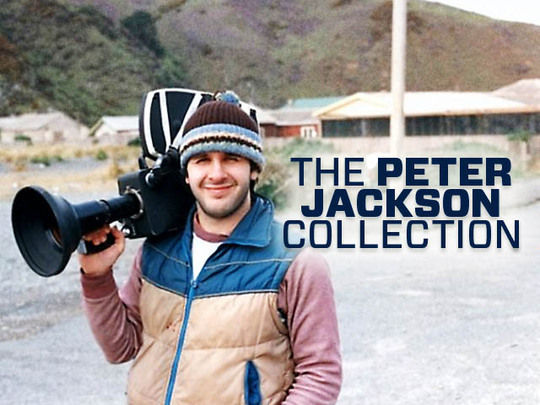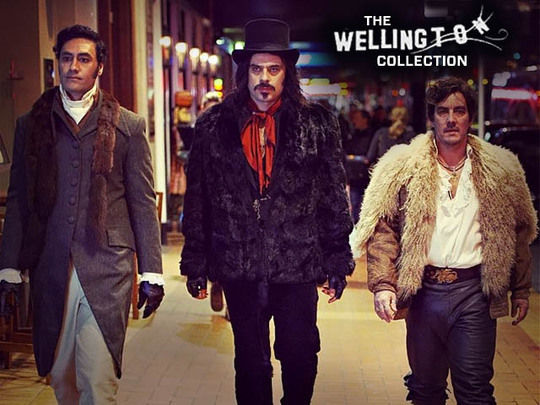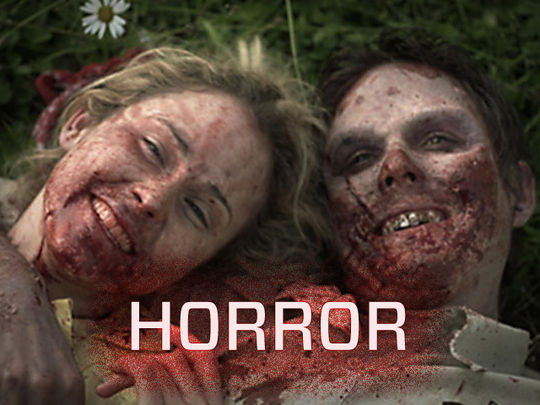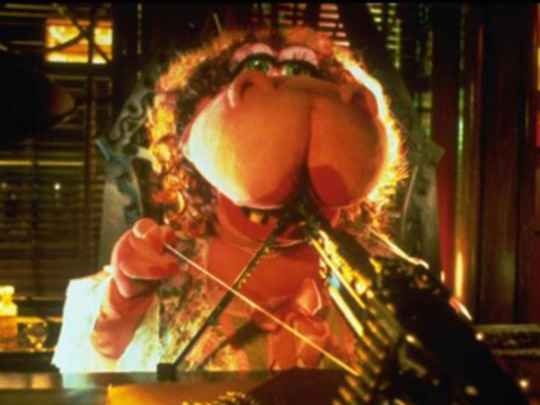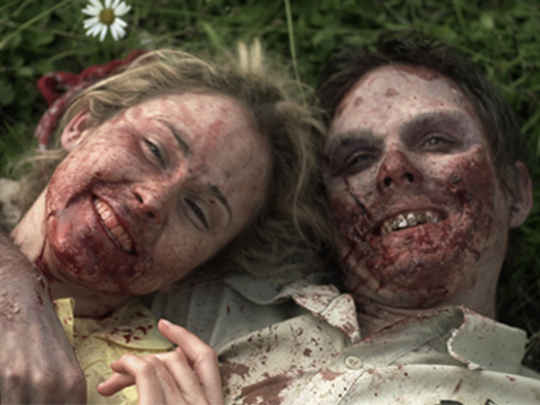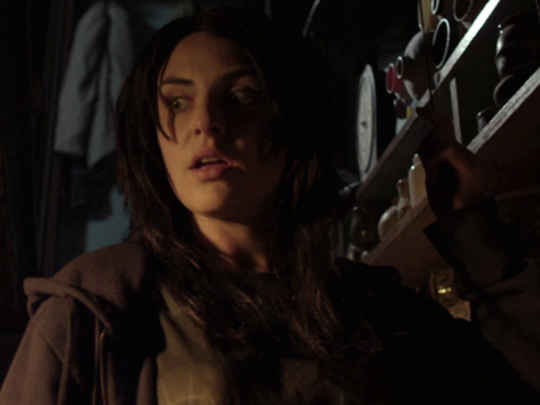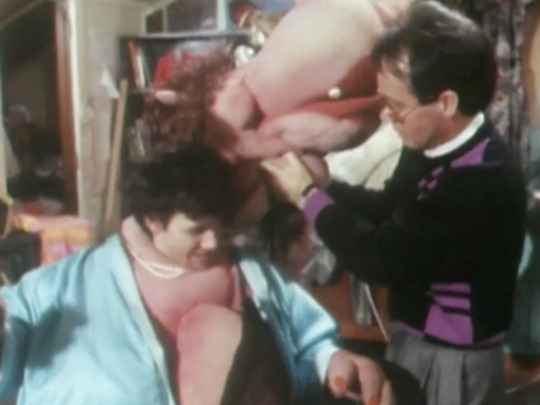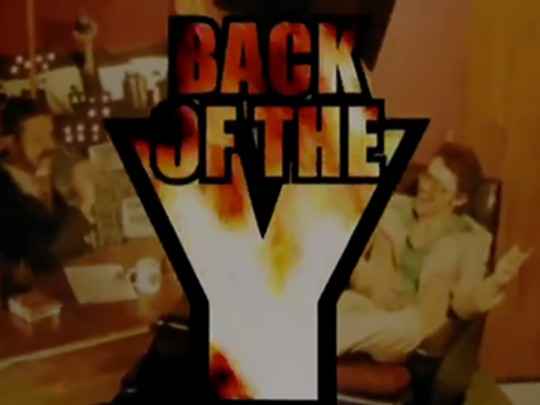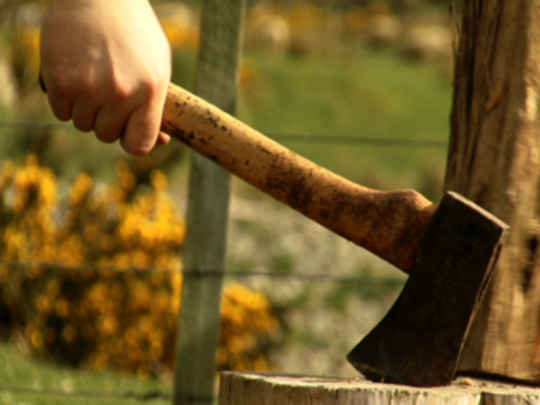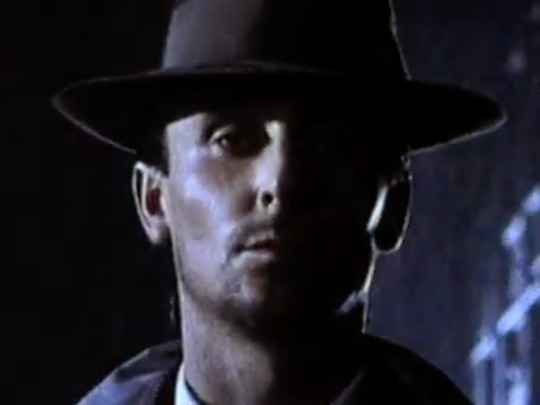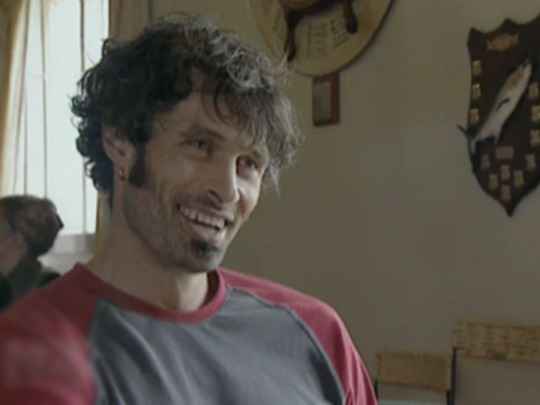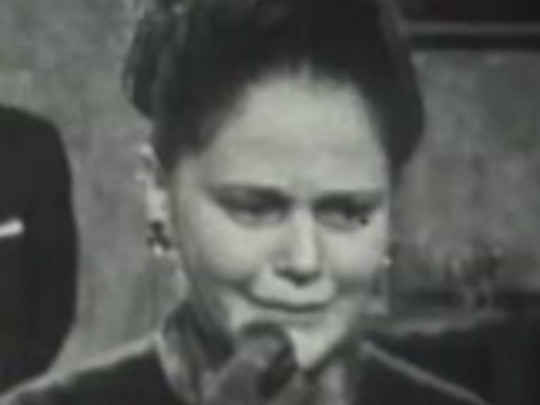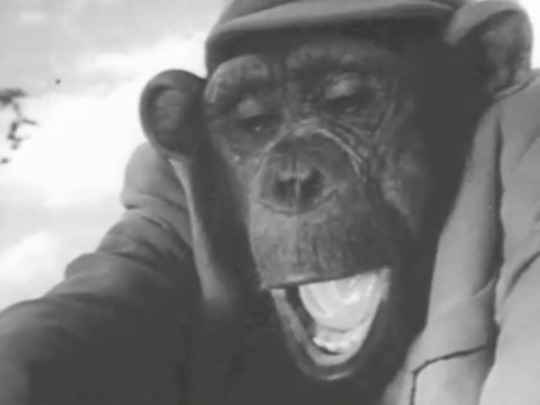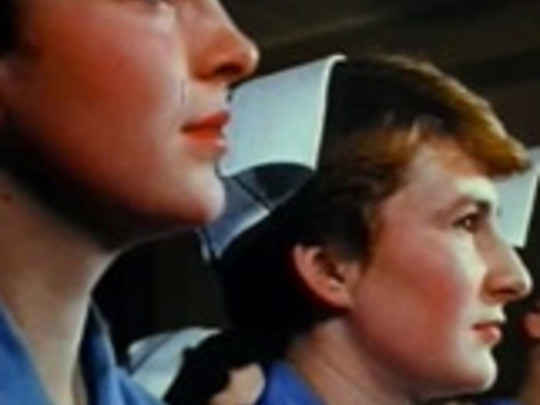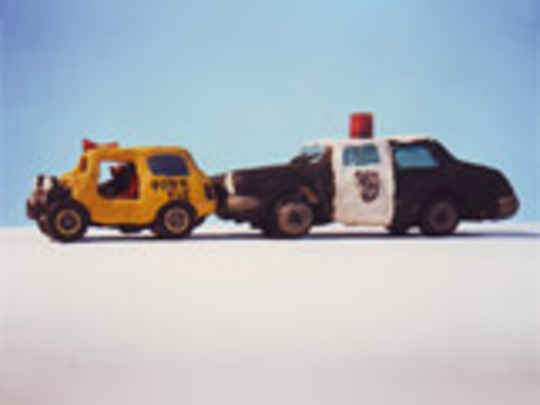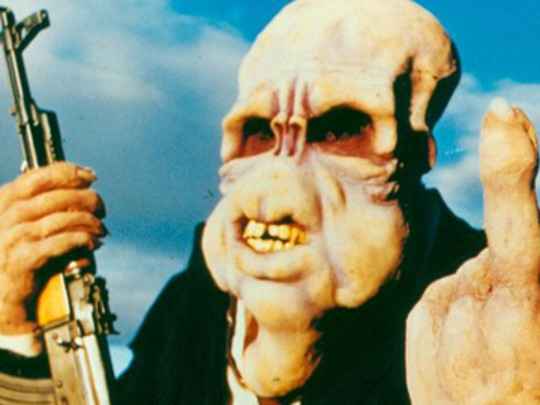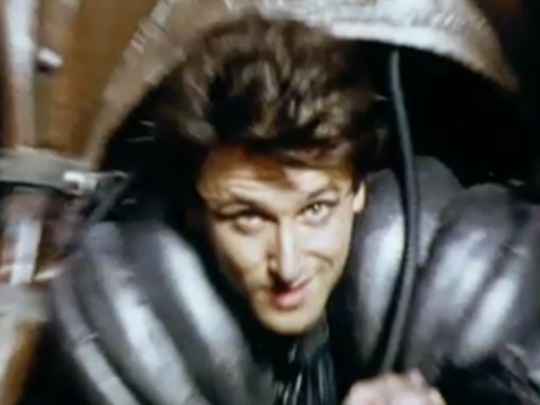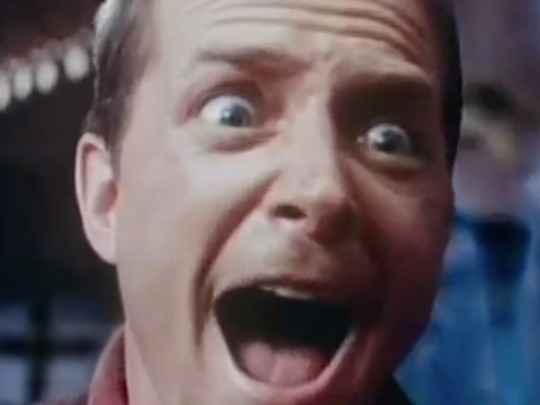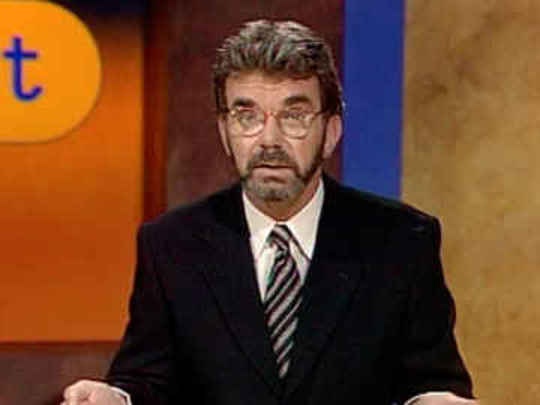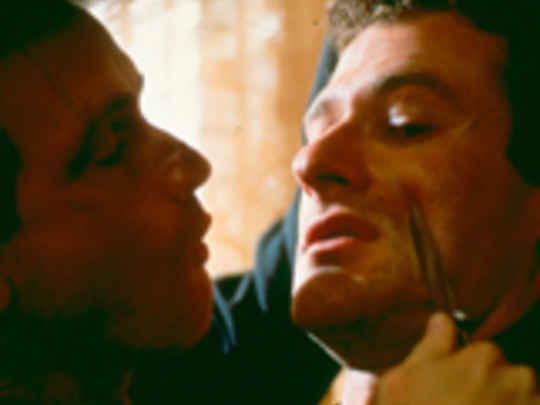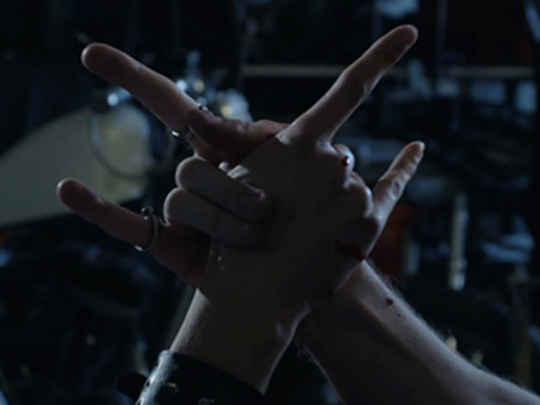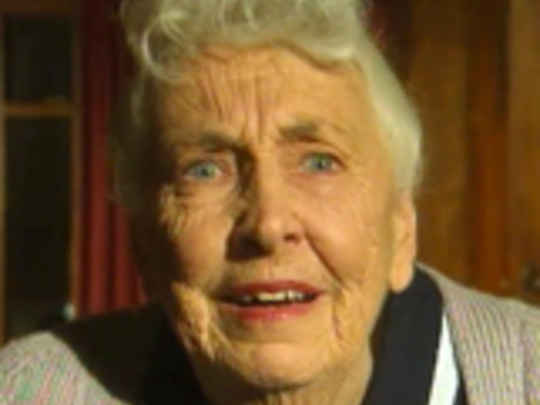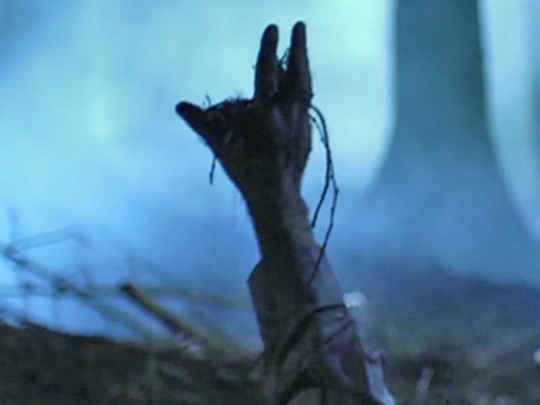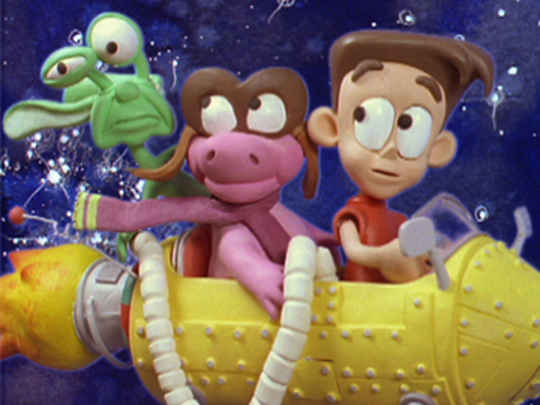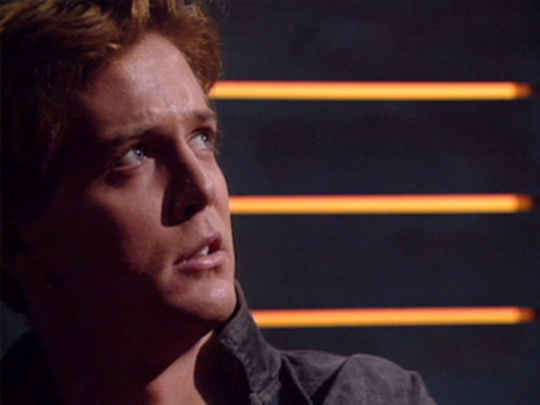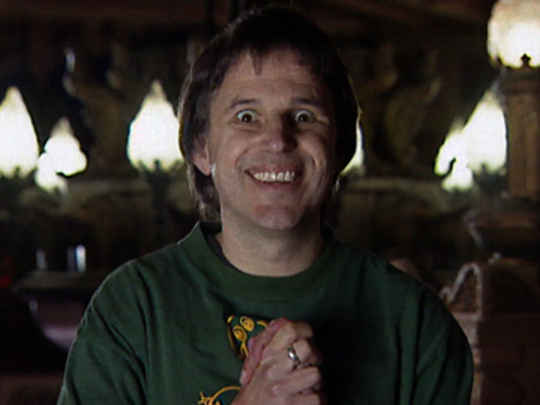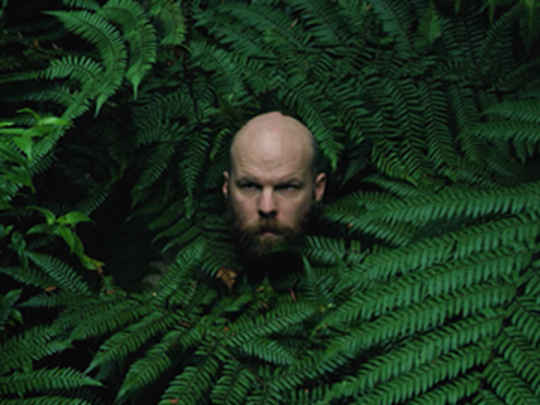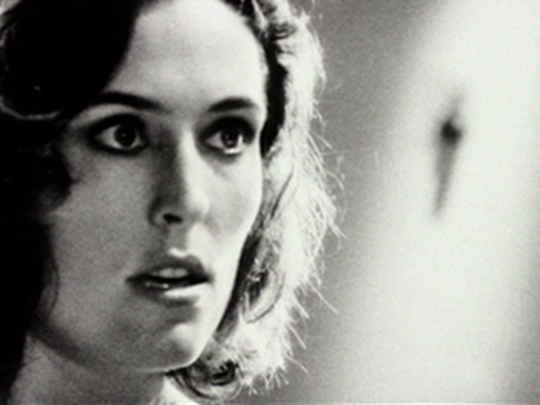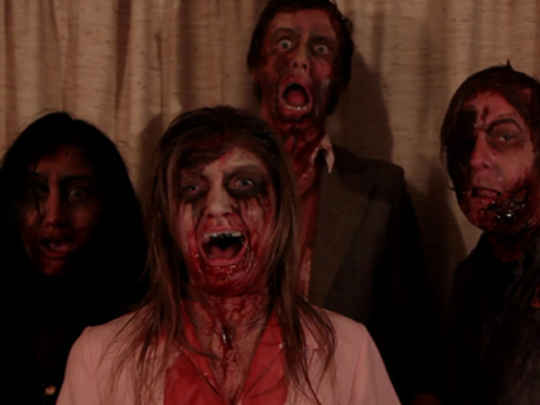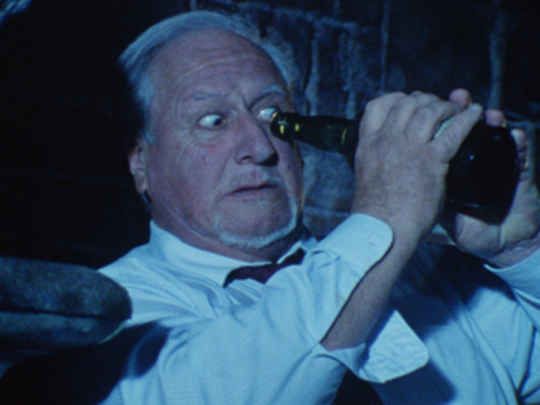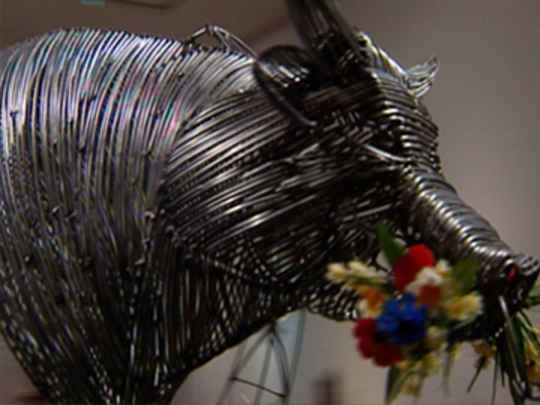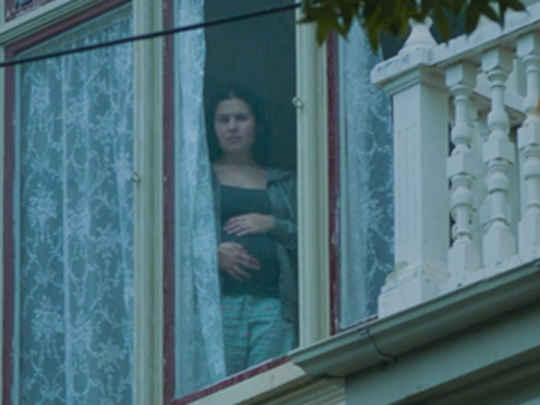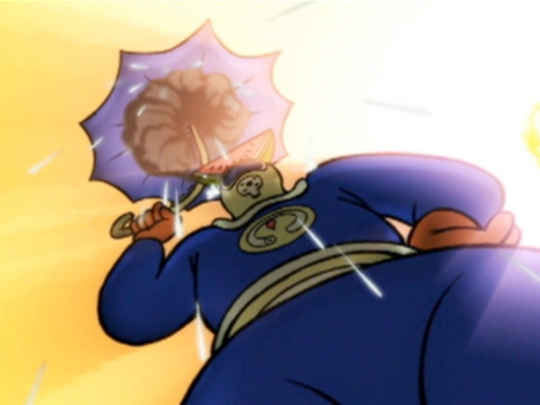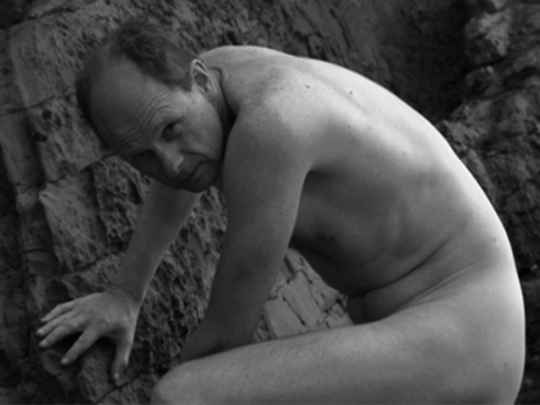Braindead
Film (Trailer) – 1992
A perspective
Peter Jackson had already been tagged with the nom de guerre, ‘The Sultan of Splatter' by fans of his first two pictures; but in this deliriously liquid romp, he took cinematic gore to a whole new extreme.
Reportedly, the corridors of Avalon studios, where interior sets were filmed, remained sticky with fetid red corn syrup for years afterwards and one time a highly pressurized blood pump exploded over the Sale of the Century television game-show set, twenty minutes before recording was supposed to begin.
The genesis of this project came after Jackson met writers Fran Walsh and Stephen Sinclair while shooting his first feature Bad Taste in 1987. The trio immediately decided to collaborate on a zombie film, but the course of the project proved to be more convoluted than any of them expected.
At one point, hopes were raised of a possible co-production deal with Spain. Accordingly, Peter met and cast a Spanish beauty (Diana Penalver) as the female lead. Then the Spanish money fell through, but Peter liked the Spanish girl so much, the kid stayed in the picture. Which explains an otherwise odd cultural detail.
Jackson's concern with making the action believable led him to a surprisingly late creative decision. The story had been written as a contemporary yarn. He chose to shift it back to the 1950s. This added untold trouble and expense, but it was a genius stroke. Rat Monkeys running amok in the 1990s? Ridiculous. But the same shenanigans seemed perfectly reasonable in the age before television.
The execution of period detail was perfect. The wonderful miniature buildings and vehicles are seamlessly integrated with live action; and the set designs, wardrobe, and dialogue, all contribute to a totally convincing evocation of the era. It was another successful partnership with Richard Taylor and the team that would become Weta Workshop.
Jackson shows us New Zealand as it was. Stuffy, boring, and shuffling along to the soundtrack of The Archers. And then, all hell breaks loose in a way it never did in the horror films of that time.
Braindead (or Dead Alive, as it was retitled in the United States) would be extraordinarily repulsive, were it not so damned funny. It's not just the extremity of the gags - some of which, like the ear in the pudding sequence, really do make you gag; Jackson has the flair and inventiveness of the silent comedians he adores. Even as flesh is stripped from bone, and body parts are chopped or minced into incomprehensible permutations, he make us laugh with deftly choreographed slapstick sequences that wouldn't have been out of place in a Buster Keaton flick.
This probably accounts for the comparatively lenient censorship rating in New Zealand as Jackson takes to the fusty Fifties with his Flymo. In some other countries like Finland, Germany, Singapore, and the U.S, it was either banned, or heavily cut.
The cast is notably sprinkled with new and evergreen talent. Tim Balme, starring as the hapless young man whose Mum is bitten by a rat monkey, went on to be a perennial leading man. Ian Watkin's Uncle Les is a villain for the ages. Who could forget Stuart Devenie's kung fu kicking priest? Or Elizabeth Moody's monstrous Mom? But surprisingly, the most indelible role of all is played by non-actor, Bill Ralston. He is the hapless Indiana Jones wannabe who kicks off the whole messy saga somewhere east of Java, on a rocky crag known as Skull Island.
Jackson was of course having fun with his fellow Kong fans, little dreaming that a decade or so later he'd be revisiting his favourite movie for real, and remaking it.
- Costa Botes is a New Zealand filmmaker whose work includes the legendary Forgotten Silver, which he co-directed with Peter Jackson.
